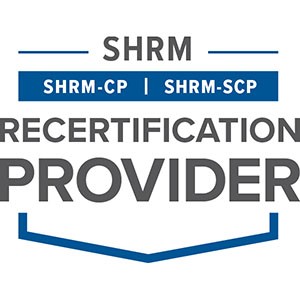homepage | Six Questions With Erin Blocher: Effective Email and Digital Communication
June 17, 2022
June 17, 2022

“Digital communication is everywhere, but that does not mean we are automatically good at it. Learning strategies for better emails and digital communication can have a big impact,” says Erin Blocher, an assistant professor of business communication at the UMKC Bloch School of Management. Blocher has more than 15 years of client experience in the field, and has collaborated with companies and leaders in nonprofit, healthcare, and government.
From email to texting with a professional focus, how can we improve our skills to become more effective communicators? Blocher discusses some of the opportunities and pitfalls with digital communication.
Many people have been using email and communicating digitally for years. Is there opportunity for improvement?
Most of us have sat in front of our computer screen – the cursor blinking – and struggled to compose a challenging email. We may stress about what to say, how to hit the right tone, or how to be understood. Texting in professional settings is becoming more common and can also be challenging. Digital communication is ubiquitous in our lives, but it is loaded with communication dangers. When we communicate digitally, we are taking away a lot of elements that give our audience information about our meaning – like body language, facial expressions, and tone of voice. The absence of those cues makes our language strategies, word choice, and how we frame our messages even more important.

What are some common misperceptions and/or mistakes made that make communication less effective?
When there has been a communication failure, it is usually because the communicator has misinterpreted their audience, the context, or something about how they are being perceived as the communicator. Those three elements (the audience, context, and speaker) make up the rhetorical situation. Each time we communicate, we want to do a quick analysis of our communication situation to gauge the barriers or opportunities found in these elements. That assessment will inform what our communication strategy should be. It may sound simple, but the more we can be deliberate about that analysis, the more likely we are to get high stakes communication right.
Does the quality and substance of our communication impact how others view and treat us professionally?
How we communicate can have a big impact on our credibility as a professional. In many cases, the only interaction another person ever has with us is by email. Have you ever made a judgement about someone you have never met based on their email? Sure you have! We all do. We may make an assessment about how smart the person is, how competent, how kind, or how efficient they are based on their writing. Our communication can either hurt how others view us, or we can use communication as a powerful impression management tool.
Does your course offer best practices?
This course covers practical mindsets and language tools you can use to make your digital communication better. We will go over a decision tree for how to pick the best message medium, how to use email functions more strategically, and how to easily convey bad news or a negative message to get the best possible reaction from your reader. The goal of the class is to share practical, actionable things you can start to use right away. Do you want to know when you should call instead of emailing? Would you like to increase the chance your email gets seen and read by the right person? Do you want to preserve a good relationship with key clients and the members of your team when having to send them a message about a difficult subject? Good news! We will cover it in this course.
Do you share client or public examples of what not to do?
When it comes to email and digital communication mistakes, there are a lot of bad examples we can learn from. I like to pull some mini-cases into the course and analyze company communications or individual emails that went wrong. Looking at a message that failed or caused repercussions can be a great way to spot our own communication blind spots. We will dive into some bad examples and then brainstorm how we could rewrite them using the strategies from the class.
How does the audience factor into professional communication, such as communicating with a manager, co-worker, or the public?
Analyzing our audience correctly is key in professional communication. The best way to connect with our audience will change if they are internal to our organization versus external. We want to pay attention the direction of our communication and shift our approach if we are communicating down, up, or to someone parallel to us. We also want to be able to distinguish between who is in our primary audience versus any secondary audiences that may receive our message. By stopping to develop a sketch of our audience, we can better tailor our message to them and achieve our communication objective.

This course is eligible for SHRM Professional Development Credits (PDCs).
UMKC TalentLink is recognized by SHRM to offer Professional Development Credits (PDCs) for SHRM-CP® or SHRM-SCP® recertification activities.

This session with Erin Blocher discusses the pitfalls of email and other digital modes of communication, how to select the best message medium for the situation, and tips for how to use email strategically. Participants will learn language and tone strategies to maximize positive messages and build confidence communicating across mediums.
